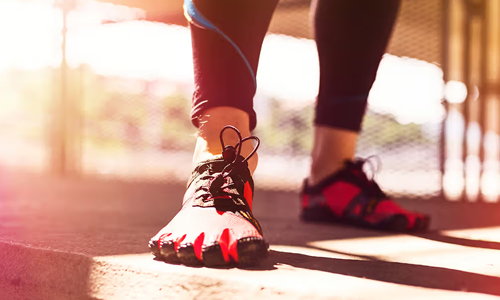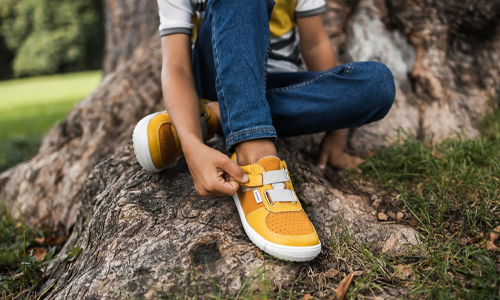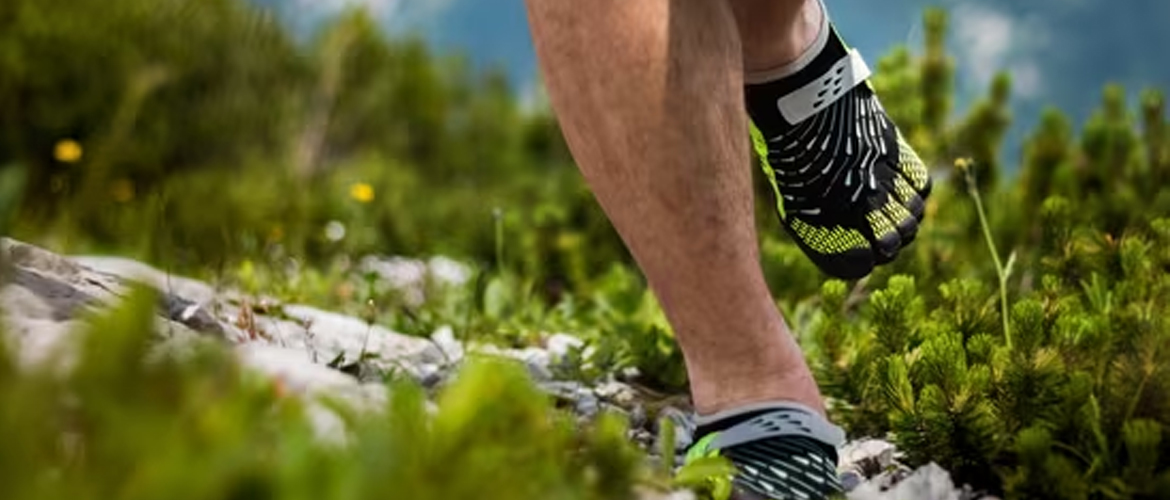You might have heard of or experienced different kinds of shoes! But have you ever heard about barefoot shoes? If not, this blog is for you! Here, we will discuss the importance, pros, and cons of wearing them and help you determine whether wearing them is good or bad. Without further delay, let’s dive into the blog to learn more about it!
What is Barefoot Shoes?

These are footwear designed for daily use, sports, and leisure activities. Their primary purpose is to mimic the feeling of walking barefoot, allowing your feet to move and flex naturally as they have evolved to do.
How Do Barefoot Shoes Work?

These shoes minimize the height of the material between your foot and the floor. These shoes allow your feet to splay out with each step, promoting better movement and providing a natural connection to the numerous joints in your feet. The unique design of these shoes creates a close-to-the-ground feel without the constraints of regular shoes.
Additionally, many barefoot shoe brands feature highly flexible soles that allow the shoes to flex, twist, and move seamlessly with your feet, offering a natural and comfortable experience with every step.
Are Barefoot Shoes Good For You?
Here are some of the benefits of wearing barefoot shoes that you should know:
- Wearing them may help improve your walking and running abilities as well as overall movement efficiency. They can also reduce stress on the lower limbs.
- These shoes allow your feet to move freely with each step you take, giving you a near-barefoot sensation without feeling like you’re wearing shoes.
- These shoes heighten your awareness of your surroundings, helping you feel more connected to the environment.
- These shoes can improve posture and enhance balance. Additionally, incorporating them into your exercise routine may significantly increase calorie burn during activities. They also help promote a natural gait and enhance mobility in your ankles and feet.
Pros and cons of Wearing a Barefoot Shoes
These are designed to mimic the feeling of walking without footwear, offer a natural approach to movement, but come with both benefits and potential drawbacks depending on individual needs and activity levels.
Pros
- Did you know? Our feet consist of 26 bones and 31 moving joints. Wearing this allows your feet to scrunch, traverse various surfaces, and flatten naturally.
- These shoes help improve lower limb function and coordination. These shoes support the chain of muscles, activating the intrinsic muscles in the foot, ankle, and leg, which enhances balance and proprioception.
- This may strengthen the intrinsic muscles, ligaments, and tendons within the foot. While modern shoes provide comfort, they often reduce activity levels, especially during workouts. In contrast, running with barefoot shoes can engage inactive muscles and ligaments, helping them function properly during performance.
Cons
- You could able to see a lot of modern shoes come with cushions, right? But these shoes do not have any cushioning. When running, this can result in significant shock absorption in your heel upon striking the surface. Other types of shoes are designed with built-in cushioning to help reduce stress on the heel. In contrast, the lack of cushioning in barefoot shoes may lead to stress on the foot muscles, bones, ankles, hips, and even, at times, the spine.
- Did you know what the plantar fascia is? The plantar fascia is a band-like connective tissue located on the underside of your foot. Most shoes are designed with rigid soles to protect and support the plantar fascia, preventing damage. However, these shoes lack this protection, which may increase the risk of developing plantar fasciitis.
- It can be ideal for individuals with flat or wide feet, as they allow the toes to spread out and provide greater comfort. However, if you have narrow feet and opt for barefoot shoes, you may feel discomfort and stress, as the shoes may not allow for secure movement within them. For optimal comfort and support, it is essential to choose barefoot shoes that match your foot type.
Tips for Transitioning to Barefoot Shoes

Here are some tips to help you transition to barefoot shoes successfully:
Start Slowly
In the beginning, you may feel uncomfortable wearing barefoot shoes. Start slowly and gradually increase the amount of time you spend wearing them. This gradual process helps your body adapt more easily over a short period. Remember not to force your body or push yourself too hard in the initial stages. Every adaptation process takes time, so be patient and follow it consistently.
Strengthen Your Feet and Lower Legs
It provide a minimal support and comfort, so it may take time for your muscles, which are accustomed to traditional shoes, to adapt. To prepare, incorporate exercises like toe curls, calf raises, and other routines to strengthen your feet and lower legs before transitioning to barefoot shoes.
Practice Consistently
As the saying goes, “Practice makes perfect.” Give your feet time to breathe and adjust. Spend time wearing barefoot shoes at home or in natural environments to allow your feet to stretch and regain their natural flexibility. Regular practice will help make the transition smoother and more effective.
Seek Professional Guidance
Consult professionals who specialize in barefoot running to address your questions and concerns. Follow their recommendations for exercises and proper techniques to ensure your transition to these shoes safely and effectively.
I hope this blog has helped you learn more about barefoot shoes. While these shoes offer several benefits, they also come with potential disadvantages. Ultimately, it all depends on your body’s comfort and support needs. Be sure to choose the right pair of barefoot shoes for you and embrace the freedom of walking naturally.
Elena
Related posts
Women Tips
Privacy Overview
| Cookie | Duration | Description |
|---|---|---|
| cookielawinfo-checkbox-analytics | 11 months | This cookie is set by GDPR Cookie Consent plugin. The cookie is used to store the user consent for the cookies in the category "Analytics". |
| cookielawinfo-checkbox-functional | 11 months | The cookie is set by GDPR cookie consent to record the user consent for the cookies in the category "Functional". |
| cookielawinfo-checkbox-necessary | 11 months | This cookie is set by GDPR Cookie Consent plugin. The cookies is used to store the user consent for the cookies in the category "Necessary". |
| cookielawinfo-checkbox-others | 11 months | This cookie is set by GDPR Cookie Consent plugin. The cookie is used to store the user consent for the cookies in the category "Other. |
| cookielawinfo-checkbox-performance | 11 months | This cookie is set by GDPR Cookie Consent plugin. The cookie is used to store the user consent for the cookies in the category "Performance". |
| viewed_cookie_policy | 11 months | The cookie is set by the GDPR Cookie Consent plugin and is used to store whether or not user has consented to the use of cookies. It does not store any personal data. |

